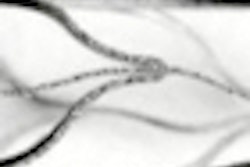A recent study comparing the effectiveness of two NiTi systems versus hand files when removing sealer and gutta-percha from root canals has concluded that, while all techniques tested left remnants, the NiTi systems performed better (International Endodontic Journal, August 16, 2011).
To test the techniques, researchers from the University of Siena in Italy prepared 60 single-rooted human teeth that were filled with gutta-percha and sealer (Pulp Canal Sealer, SybronEndo).
The teeth were divided into three groups (n = 20) based on which files were used: MTwo Retreatment Files in group 1, R-Endo (Micro-Mega) in group 2, K-files (SybronEndo) and Gates-Glidden (Pulpdent) drills in group 3. The researchers then took radiographs to evaluate the percentage of residual gutta-percha in the coronal, middle, and apical thirds, as well as for the whole canal. They also noted broken instruments, time needed, and apically extruded debris.
All instrumentation techniques left gutta-percha and sealer remnants inside the root canals, the study authors wrote. NiTi systems were significantly faster (p < 0.05) than the manual technique and significantly more effective (p < 0.05) in removing gutta-percha particularly from the middle and apical thirds of the root canal.
R-Endo instrumentation was significantly more effective (p < 0.05) than MTwo retreatment files in removing gutta-percha from the middle and apical thirds, the researchers noted. In addition, the R-Endo instruments were associated with the least number of cases of apical extrusion.



















